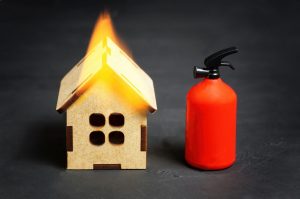Plywood is a board made of multiple layers of thin wood sheets (veneers) bonded together with adhesive. The grain direction of each layer of veneer is usually perpendicular to each other to enhance the strength and stability of the board. Plywood is a widely used wood product used in construction, furniture manufacturing, packaging and other fields. Optimizing the manufacturing process of plywood can improve the quality of the product and production efficiency. The following is an optimization process of step thinking:
Step 1: Raw material selection
Plywood is a man-made board made of multiple layers of thin wood veneers bonded by adhesives. Its unique structure gives it many excellent properties: isotropy, good dimensional stability, high strength, and easy processing. These characteristics enable plywood to adapt to various use environments, from interior decoration to outdoor construction.
High quality raw materials are the basis for manufacturing high quality plywood. Choose wood with uniform texture, no obvious defects and insect eyes. By optimizing the selection of raw materials, defects and waste in the production process can be reduced.
Analysis of main plywood types and their characteristics
Cork plywood: made of cork such as pine and fir, it has a light texture, is easy to process, and is relatively cheap. It is suitable for occasions such as interior decoration and packaging boxes that do not require high strength.
Hardwood plywood: made of hardwood such as birch and oak, it has high density, high strength, and beautiful surface texture. It is often used in places such as high-end furniture and floors that require load-bearing and beautiful appearance.
Special plywood:
Waterproof plywood: uses phenolic resin glue, has excellent waterproof performance, suitable for outdoor construction, shipbuilding and other humid environments.
Fireproof plywood: After special treatment, it has flame retardant properties and is used in public places with high fire protection requirements.
Decorative plywood: The surface is affixed with decorative veneer or impregnated paper, which can be directly used for interior decoration, reducing secondary processing.
Before gluing wood, some pretreatment is required. First, the logs are cut into blocks of the required size. Then, the wood is steamed or soaked to give it the right moisture content to improve gluing. In addition, the wood can be surface treated, such as removing bark and trimming edges, to ensure the appearance quality of the final product:
1.Veneer drying
Purpose: Reduce the moisture content of veneers and ensure bonding strength.
Method: Use natural drying or drying kiln to control the moisture content at 8%-12%.
2.Veneer finishing
Purpose: Remove defects and improve the quality of veneers.
Method: Repair cracks and holes, trim irregular edges, and ensure the flatness of veneers.
3.Veneer gluing
Purpose: Enhance the bonding between veneers.
Method: Use roller coating or spraying to evenly apply adhesive. Commonly used adhesives include urea-formaldehyde resin, phenolic resin, etc.
4.Veneer assembly
Purpose: Arrange the veneers after gluing in an interlaced manner according to the grain direction and prepare for hot pressing.
Method: Adjust the number of veneer layers and arrangement according to needs.
5.Pre-pressing
Purpose: Expel air to make the veneers initially bonded.
Method: Pressurize at room temperature or slightly higher temperature for a short time.
6.Hot pressing
Purpose: Curing the adhesive by high temperature and high pressure to form a strong bond.
Method: Apply appropriate temperature (usually 110-140°C) and pressure (1.0-1.5 MPa) in the hot press for several minutes.
7.Cooling and curing
Purpose: Stabilize the performance of plywood and prevent deformation.
Method: Cool naturally after hot pressing and place in a suitable environment for a period of time.
8.Surface treatment
Purpose: Improve appearance and durability.
Method: Sanding, veneer, painting, etc, depending on the specific use.
Step 3: Adhesive Selection
Adhesives play a vital role in the manufacturing process of plywood. Choose the right adhesive type and formula to give it good bonding strength and durability. Commonly used adhesives include urea-formaldehyde resin, and phenolic resin.
Plywood adhesives are key materials used to bond multiple layers of wood together, which directly affects the strength, durability and environmental performance of plywood. The following are common types of plywood adhesives and their characteristics:
1.Urea-formaldehyde resin adhesive (UF)
Features: low price, high bonding strength, fast curing.
Disadvantages: poor water resistance, release of formaldehyde, and low environmental protection.
Application: commonly used in indoor furniture and decorative materials.
2.Phenolic resin adhesive (PF)
Features: water resistance, weather resistance, high temperature resistance, high bonding strength.
Disadvantages: dark color, high price, long curing time.
Application: suitable for outdoor building formwork, ship and container flooring, etc.
Step 4: Gluing process
The gluing process is the most critical step in the manufacturing process of plywood. First, the adhesive is applied to the surface of the wood, and then the wood blocks are stacked together according to the design requirements. During the stacking process, a clamp or press can be used to apply pressure to ensure a tight fit between the wood. Finally, the stacked wood blocks are heated to promote the curing of the adhesive.
Step 5: Trimming and processing
After gluing is completed, the plywood needs to be trimmed and processed. First, the edges of the plywood are trimmed to ensure its flatness and straightness. Then, the plywood can be cut, punched, engraved and other processing techniques as needed to meet different application requirements
Step 6: Quality Control
Quality control is an important part of optimizing the manufacturing process of plywood. By introducing strict quality inspection standards and process control, the quality stability and consistency of plywood can be ensured. For example, test of the plywood thickness, strength, flatness, etc , and key parameters in the production process are recorded and analyzed.
By optimizing the manufacturing process of plywood through the above steps, the quality and production efficiency of the product can be improved to meet market demand.

